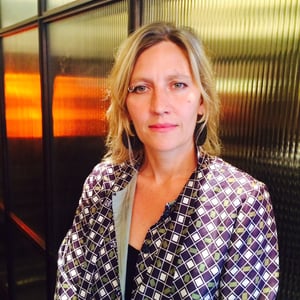Senior Lecturer in Visual Communication

- mokell@uca.ac.uk
- Canterbury
- Media enquiries
Molly Okell is a Senior Lecturer in Visual Communication at UCA Canterbury. With a background in illustration and animation, Molly has worked on high-profile commissions for bands like U2 and Radiohead. Her current practice encompasses sculpture and printmaking, often exploring the relationship between materials and their functions. An award-winning artist, Molly continues to contribute to both academic and creative fields through her teaching and art practice.
Bio
On graduating from Camberwell College of Art (BA Hons Illustration) and the Royal College of Art (MA Animation) Molly won the Deutsche Bank Award for Creative Enterprise and set up a company with two other animators.
They were immediately signed up to Nexus where they completed a number of commissions for bands including the U2 Pop Mart Tour and Radiohead alongside animation shorts for onedotzero and the ICA.
Molly then moved into live action directing initially working as a freelance director for EMAP and then full time at Channel 4 directing and producing over 500 band promos, sponsorship bumpers, idents and brand ads for a wide range of clients including Rimmel London, Ford, Virgin Media and Coca-Cola as well as major record labels Universal, Sony BMG and Warner Music.
She was promoted to Head of Commercial Content for Channel 4’s 4Music while continuing with her own art practice which evolved to include sculpture and printmaking.
An award-winning printmaker she regularly exhibits her prints alongside her sculptures and has taken on a number of public and private sculpture commissions.
Research statement
Molly’s current research revolves around intentional and unintentional assemblages. The work explores the fabrics used in construction and the relationship between functional and non-functional forms. Her sculptures aim to disrupt the conscious and unconscious familiarity of fabric and function by asking questions of the materials and placing them outside their assumed location. An acknowledgement of the parallels between architectural and sculptural methods is vital; however, this work demands a conscious division within the construction process that takes the work from the functional into the sculptural.
- Gustav Holst sculpture commission
- DYCP ACE England
- RISE: Realtime Immersive Sculpture Experience
- SBSS: Self-Build Sustainable Sculpture
- RUSS: Unfinished

Media Enquiries
For media enquiries, please contact our Press Office Team: pressoffice@uca.ac.uk.